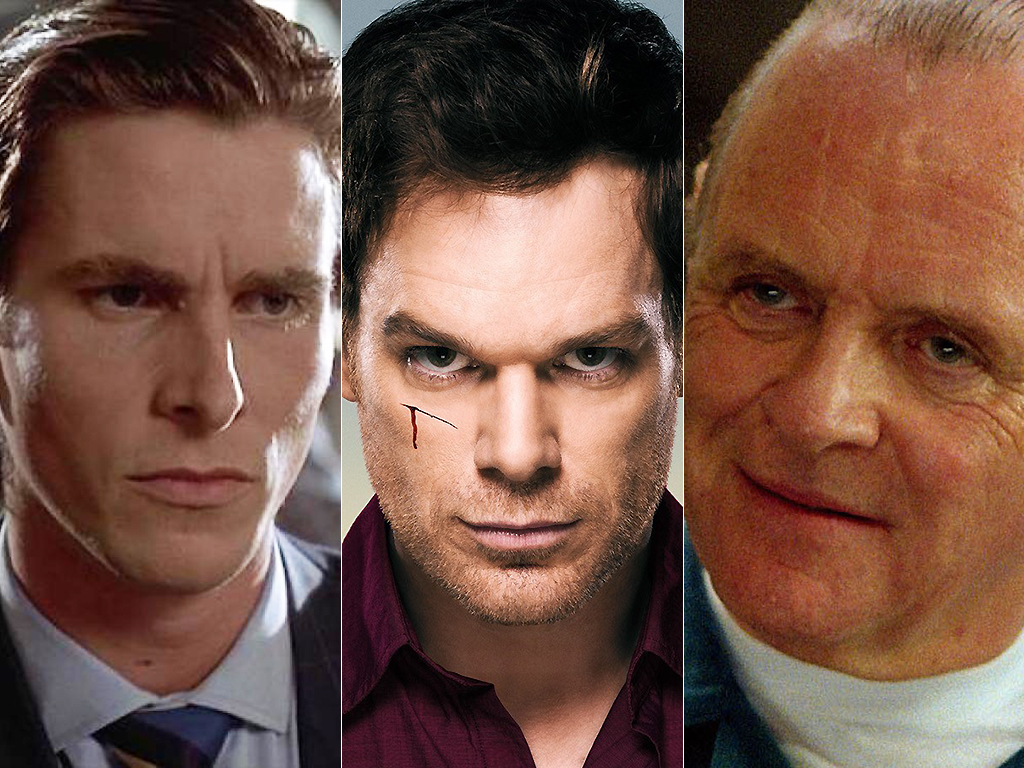We’ve all seen killers and murderers depicted on television or in movies as silent geniuses, lone wolves tracking their victims with intricate, elaborate methods. Often they’re over-the-top meticulous in their diabolical planning — Kevin Spacey’s serial killer John Doe in Se7en, for example, or Hannibal Lecter of Silence of the Lambs — and are viewed as fiercely intelligent, often to the point where the character doesn’t even view themselves as human.

READ MORE: Ryan Eggold on ‘New Amsterdam,’ health care and leaving ‘The Blacklist’
Michael Arntfield, a Canadian ex-cop-and-detective-turned-criminologist, says pop culture has led us astray for years, and these super-intelligent beings are a dramatic interpretation of reality. A graduate and associate professor at London’s Western University, Arntfield founded the Cold Case Society – an unsolved crimes think tank – in 2011.
His work focuses on what he’s coined “literary criminology,” the study of detective fiction like Sherlock Holmes in literature, film and TV and how it can influence present-day criminal investigation. He’s delivering a TEDxToronto talk on the subject on Friday, Oct. 26.
Global News spoke with Arntfield about the realities of crime and how we’ve been led to believe otherwise. You’ll never look at a pop-culture killer the same way again.
For those unaware, literary fiction helped form modern forensic science
We’ve been taught to think that police work influenced fictitious characters and classic literature. It’s actually the other way around.
“‘Literary criminology’ is the idea of studying the criminal mind and the evolution of criminal investigative procedure through the lens of literature,” said Arntfield. “Most of the investigative techniques we take for granted today — including standardized interrogation, accusatory interviewing, fingerprinting, handwriting analysis — all the measures of forensic exactitude were first conceptualized by writers of fiction, often horror and fantasy. What they were doing was laying the groundwork for what ultimately became standardized police techniques.”
“Nineteenth-century Gothic fiction was the creative engine for the modernization of police work,” he continued. “A similar connection has already been drawn between the great sci-fi writers and the space program in the U.S. There is a definite cross-pollination there, and these ideas get picked up by osmosis in the real world.”
READ MORE: Sarah Silverman says Louis C.K. previously masturbated in front of her with her consent
Sherlock Holmes, for example, isn’t just a fascinating character. The creator of the world’s most famous fictional detective, Arthur Conan Doyle, through the details in his work, helped set the groundwork for what was to come.
TV and movies send us the wrong message about killers. They’re actually really boring in real life
Our modern methods of consumption have changed over the years; in addition to reading, we’re now watching far more TV and movies. While some programs and films are more accurate than others (fact-based Forensic Files, for example), most are way off the mark and separate from reality.
“Especially with serial killers, the No. 1 thing is — and you see this on Criminal Minds and the majority of these shows — they’re far from supervillains,” said Arntfield. “This is another plot device that’s inherited from literary characters like Professor Moriarty in Sherlock Holmes, you know, this criminal genius.
“In reality, what makes killers so frightening is their banality. We have firm data now on their leading occupations, their leading sexual practices, and they’re actually extremely underachieving, depressingly boring people. They’re keenly aware of it, which is partly why they go exploring these disturbing dark fantasies, in stark contrast with their failure in real life. As twisted as it sounds, it becomes the one area where they’re able to attain some degree of success: causing pain and suffering.”
The jobs a killer is most likely to have
Forget the image of the ridiculously skilled killer. That’s just not the case, asserts Arntfield.
“A lot of these jobs are ones that people don’t have anymore (since the best data we have on serial killers has come from the ’70s and ’80s),” he clarified. “In terms of top-skilled occupations, it’s aircraft machinist. Second-most common is an automobile upholsterer and third is a shoemaker.”
Alleged Toronto serial killer Bruce MacArthur falls within the parameters of the occupational predictors. While he hasn’t yet been found guilty of the murders of several men, their DNA and body parts were found in several planters on properties where MacArthur, a landscaper, had worked.
LISTEN: Check out Curiouscast’s new podcast Nighttime. Subscribe on Apple Podcasts and Google Podcasts
A general landscaper/labourer is the most common unskilled occupation of a serial killer, and since he owned his company, he didn’t have to report to anyone or disclose his whereabouts at any time.
“Historically, these are people who are given access to properties that no one thinks suspiciously of if they’re seen coming or going on someone’s property, or if they’re seen digging a hole,” said Arntfield. “There’s a well-known case in Michigan, the guy was a sprinkler/irrigation installer, scoped houses. He’d killed two people before they caught him. Two scenes that had nothing to do with each other, other than the sprinkler work they’d had done. That’s how they caught him.”
Hannibal Lecter is a lie
Don’t expect your surgeon or psychiatrist to have a dramatic, murderous double life. Arntfield attests that characters like Hannibal Lecter are nothing more than a fabrication or embellishment of reality.
“Escape artists, criminal geniuses, that’s something created by Hollywood,” he said. “I know of no remotely similar offender in looking at thousands of offenders. Some may have elevated IQs, but not that degree of versatility through all elements of life, much less the physical prowess to accompany this cunning genius.
“They’re just not. They get away with it for as long as they do in part because they’re attacking voiceless victims who lay undiscovered for a long time, or it’s due to ineptitude and apathy on the part of lawmakers or law enforcement.”
WATCH BELOW: The golden age of serial killers

The shows that get it right are few…
If darkness and accuracy are your things, then there are at least a couple of TV shows that pass the “real-life” test.
“In terms of scripted TV, I would say the most accurate is Mindhunter, which is the depiction of the creation of the FBI’s Elite Serial Crime Unit,” said Arntfield. “To a lesser extent, I would say the first couple seasons of The Fall. They depict the motives and sexual drives of the offender very accurately, including his line of work. He aligns himself in grief counselling because he’s a necrophile. He’s obsessed with the ritualistic posing and what have you, that’s all very consistent. He’s really sort of a composite character of multiple different homicidal necrophiles.”
… And far between
Don’t get too excited — most procedurals dealing with this subject matter are way off the mark in terms of realism.
There’s one positive to the general populace watching these shows, however. Excluding procedurals, the general public is becoming savvier by watching this kind of content. There’s been an increase in the overall knowledge of forensics, and some folks are even becoming armchair detectives.
“That’s a part of literary criminology: the media, including TV and film, and how it shapes peoples’ perception of crime, their expectations of public services, their perception of offenders and justice,” said Arntfield. “People trivialize these series, but I think they have a foundational role to play in terms of peoples’ relationship to the criminal justice system. In many cases, it’s their only relationship, tangentially, with the criminal justice system.”
READ MORE: ‘Making a Murderer’ Season 2 hits Netflix
Despite whatever knowledge people have garnered during the recent true-crime craze, Arntfield is still worried about the impact the internet has, and will continue to have, on this type of vicious, violent deviance.
“A lot of these people are finding saliency with their different fetishes and dark fantasies through the internet, and they’re not popping up on police radar,” he said, concerned. “You don’t need to peep in a window and take the risk of being caught for prowling; you don’t need to go to the park and be a lover’s lane voyeur anymore. You can do all this from behind a desktop. By the time those people have escalated to actually taking steps of acting out these fantasies, they haven’t even entered the orbit of law enforcement.”
“We may be entering a time where we see a surge, much like we did in the ’80s after the ’70s, of these people profligating,” he warned.
So the question everyone wants to know the answer to: Is Steven Avery guilty or not?
“Absolutely guilty,” said Arntfield. “His nephew got railroaded, that’s miscarriage of justice. The baby got thrown out with the bathwater, but Steven Avery is absolutely guilty.”
—
For more information on Arntfield’s TEDxToronto talk, please visit the official website.








Comments